
AI for Marketing: Create Content That Drives Results
Last updated: November 20, 2025 Read in fullscreen view
- 25 Nov 2025
 How AI Agents Are Redefining Enterprise Automation and Decision-Making 27/42
How AI Agents Are Redefining Enterprise Automation and Decision-Making 27/42 - 18 Oct 2020
 How to use the "Knowns" and "Unknowns" technique to manage assumptions 21/989
How to use the "Knowns" and "Unknowns" technique to manage assumptions 21/989 - 05 Oct 2025
 The New Facebook Algorithm: A Paradigm Shift in Content Discovery 19/46
The New Facebook Algorithm: A Paradigm Shift in Content Discovery 19/46 - 01 Jul 2025
 The Hidden Costs of Not Adopting AI Agents: Risk of Falling Behind 17/108
The Hidden Costs of Not Adopting AI Agents: Risk of Falling Behind 17/108 - 07 Nov 2025
 Online vs. Offline Machine Learning Courses in South Africa: Which One Should You Pick? 16/30
Online vs. Offline Machine Learning Courses in South Africa: Which One Should You Pick? 16/30 - 01 Oct 2020
 Fail fast, learn faster with Agile methodology 13/973
Fail fast, learn faster with Agile methodology 13/973 - 03 Nov 2023
 Why Is Billable Viable Product An Alternative To Minimum Viable Product? 12/165
Why Is Billable Viable Product An Alternative To Minimum Viable Product? 12/165 - 21 Nov 2025
 The Rise of AgentOps: How Enterprises Are Managing and Scaling AI Agents 12/43
The Rise of AgentOps: How Enterprises Are Managing and Scaling AI Agents 12/43 - 25 Nov 2025
 FaceSearchEngine.com Review: Can It Really Find Someone with Just a Photo? 11/23
FaceSearchEngine.com Review: Can It Really Find Someone with Just a Photo? 11/23 - 06 Nov 2025
 Top 10 AI Development Companies in the USA to Watch in 2026 10/36
Top 10 AI Development Companies in the USA to Watch in 2026 10/36 - 12 Oct 2022
 14 Common Reasons Software Projects Fail (And How To Avoid Them) 10/504
14 Common Reasons Software Projects Fail (And How To Avoid Them) 10/504 - 21 Sep 2023
 Abraham Wald and the Missing Bullet Holes 9/598
Abraham Wald and the Missing Bullet Holes 9/598 - 30 Jul 2024
 The Future of IT Consulting: Trends and Opportunities 8/131
The Future of IT Consulting: Trends and Opportunities 8/131 - 18 Jul 2024
 The 8 Best ways to Innovate your SAAS Business Model in 2024 8/205
The 8 Best ways to Innovate your SAAS Business Model in 2024 8/205 - 29 Nov 2021
 Memorandum of Understanding (MOU) for Partnership Agreements 7/470
Memorandum of Understanding (MOU) for Partnership Agreements 7/470 - 19 Oct 2021
 Is gold plating good or bad in project management? 7/754
Is gold plating good or bad in project management? 7/754 - 10 Nov 2022
 Poor Code Indicators and How to Improve Your Code? 7/213
Poor Code Indicators and How to Improve Your Code? 7/213 - 06 Feb 2021
 Why fail fast and learn fast? 6/375
Why fail fast and learn fast? 6/375 - 28 Jul 2022
 POC, Prototypes, Pilots and MVP: What Are the Differences? 6/606
POC, Prototypes, Pilots and MVP: What Are the Differences? 6/606 - 13 Oct 2021
 Outsourcing Software Development: MVP, Proof of Concept (POC) and Prototyping. Which is better? 6/424
Outsourcing Software Development: MVP, Proof of Concept (POC) and Prototyping. Which is better? 6/424 - 27 Jul 2024
 Positive Psychology in the Digital Age: Future Directions and Technologies 6/337
Positive Psychology in the Digital Age: Future Directions and Technologies 6/337 - 05 Aug 2024
 Revisiting the Mistake That Halted Japan's Software Surge 6/322
Revisiting the Mistake That Halted Japan's Software Surge 6/322 - 14 Aug 2024
 From Steel to Software: The Reluctant Evolution of Japan's Tech Corporates 6/488
From Steel to Software: The Reluctant Evolution of Japan's Tech Corporates 6/488 - 01 Mar 2023
 Bug Prioritization - What are the 5 levels of priority? 6/207
Bug Prioritization - What are the 5 levels of priority? 6/207 - 05 Mar 2021
 How do you minimize risks when you outsource software development? 5/317
How do you minimize risks when you outsource software development? 5/317 - 11 Oct 2022
 Why choose Billable Viable Product (BVP) over Minimum Viable Product (MVP) 5/315
Why choose Billable Viable Product (BVP) over Minimum Viable Product (MVP) 5/315 - 31 Aug 2022
 What are the best practices for software contract negotiations? 5/215
What are the best practices for software contract negotiations? 5/215 - 07 Oct 2025
 Case Study: Using the “Messaging House” Framework to Build a Digital Transformation Roadmap 5/45
Case Study: Using the “Messaging House” Framework to Build a Digital Transformation Roadmap 5/45 - 24 Dec 2024
 Artificial Intelligence and Cybersecurity: Building Trust in EFL Tutoring 5/144
Artificial Intelligence and Cybersecurity: Building Trust in EFL Tutoring 5/144 - 28 Nov 2025
 How AI Will Transform Vendor Onboarding and Seller Management in 2026 4/21
How AI Will Transform Vendor Onboarding and Seller Management in 2026 4/21 - 04 Oct 2022
 Which ERP implementation strategy is right for your business? 4/278
Which ERP implementation strategy is right for your business? 4/278 - 12 Dec 2021
 Zero Sum Games Agile vs. Waterfall Project Management Methods 4/374
Zero Sum Games Agile vs. Waterfall Project Management Methods 4/374 - 14 Oct 2021
 Advantages and Disadvantages of Time and Material Contract (T&M) 4/789
Advantages and Disadvantages of Time and Material Contract (T&M) 4/789 - 18 Jul 2021
 How To Ramp Up An Offshore Software Development Team Quickly 3/516
How To Ramp Up An Offshore Software Development Team Quickly 3/516 - 08 Oct 2022
 KPI - The New Leadership 3/557
KPI - The New Leadership 3/557 - 18 Aug 2022
 What are the consequences of poor requirements with software development projects? 3/242
What are the consequences of poor requirements with software development projects? 3/242 - 20 Dec 2021
 What is Hybrid Mobile App Development? 3/313
What is Hybrid Mobile App Development? 3/313 - 31 Oct 2021
 Tips to Fail Fast With Outsourcing 3/375
Tips to Fail Fast With Outsourcing 3/375 - 01 Dec 2023
 Laws of Project Management 3/249
Laws of Project Management 3/249 - 09 Jul 2024
 What Is Artificial Intelligence and How Is It Used Today? 3/216
What Is Artificial Intelligence and How Is It Used Today? 3/216 - 09 Oct 2024
 Short-Form Video Advertising: The Secret to Captivating Your Audience 3/107
Short-Form Video Advertising: The Secret to Captivating Your Audience 3/107 - 05 Sep 2023
 The Cold Start Problem: How to Start and Scale Network Effects 3/167
The Cold Start Problem: How to Start and Scale Network Effects 3/167 - 06 Dec 2024
 Steps For Integrating Sustainable Practices Into Business Operations 3/114
Steps For Integrating Sustainable Practices Into Business Operations 3/114 - 27 Feb 2025
 How AI Agents are Changing Software Development? 3/170
How AI Agents are Changing Software Development? 3/170 - 21 Apr 2025
 Agent AI in Multimodal Interaction: Transforming Human-Computer Engagement 2/148
Agent AI in Multimodal Interaction: Transforming Human-Computer Engagement 2/148 - 05 Jun 2025
 How AI-Driven Computer Vision Is Changing the Face of Retail Analytics 2/77
How AI-Driven Computer Vision Is Changing the Face of Retail Analytics 2/77 - 25 Jan 2025
 The Decline of Traditional SaaS and the Rise of AI-first Applications 2/73
The Decline of Traditional SaaS and the Rise of AI-first Applications 2/73 - 04 Oct 2023
 The Future of Work: Harnessing AI Solutions for Business Growth 2/258
The Future of Work: Harnessing AI Solutions for Business Growth 2/258 - 22 Nov 2024
 The Role of AI in Enhancing Business Efficiency and Decision-Making 2/155
The Role of AI in Enhancing Business Efficiency and Decision-Making 2/155 - 26 Sep 2024
 Successful Project Management Techniques You Need to Look Out For 2/368
Successful Project Management Techniques You Need to Look Out For 2/368 - 17 Oct 2025
 MLOps vs AIOps: What’s the Difference and Why It Matters 2/67
MLOps vs AIOps: What’s the Difference and Why It Matters 2/67 - 07 Aug 2024
 7 Advantages of the Image to Text Converter Tool for Business Entities 2/127
7 Advantages of the Image to Text Converter Tool for Business Entities 2/127 - 01 May 2024
 Warren Buffett’s Golden Rule for Digital Transformation: Avoiding Tech Overload 2/188
Warren Buffett’s Golden Rule for Digital Transformation: Avoiding Tech Overload 2/188 - 21 Aug 2024
 What is Singularity and Its Impact on Businesses? 2/324
What is Singularity and Its Impact on Businesses? 2/324 - 10 Sep 2024
 Leading Remote Teams in Hybrid Work Environments 2/125
Leading Remote Teams in Hybrid Work Environments 2/125 - 18 Aug 2024
 The Future of Web Development: Emerging Trends and Technologies Every Developer Should Know 2/175
The Future of Web Development: Emerging Trends and Technologies Every Developer Should Know 2/175 - 21 Dec 2023
 Top 12 Low-Code Platforms To Use in 2024 2/1149
Top 12 Low-Code Platforms To Use in 2024 2/1149 - 31 Dec 2022
 The New Normal for Software Development 2/343
The New Normal for Software Development 2/343 - 23 Sep 2021
 INFOGRAPHIC: Top 9 Software Outsourcing Mistakes 2/411
INFOGRAPHIC: Top 9 Software Outsourcing Mistakes 2/411 - 17 Feb 2022
 Prioritizing Software Requirements with Kano Analysis 2/280
Prioritizing Software Requirements with Kano Analysis 2/280 - 07 Nov 2022
 Why Design Thinking can save the outsourcing industry 2/168
Why Design Thinking can save the outsourcing industry 2/168 - 10 Dec 2023
 Pain points of User Acceptance Testing (UAT) 2/416
Pain points of User Acceptance Testing (UAT) 2/416 - 04 Oct 2021
 Product Validation: The Key to Developing the Best Product Possible 2/295
Product Validation: The Key to Developing the Best Product Possible 2/295 - 13 Dec 2020
 Move fast, fail fast, fail-safe 2/292
Move fast, fail fast, fail-safe 2/292 - 28 Dec 2021
 8 types of pricing models in software development outsourcing 2/417
8 types of pricing models in software development outsourcing 2/417 - 28 Oct 2022
 Build Operate Transfer (B.O.T) Model in Software Outsourcing 2/361
Build Operate Transfer (B.O.T) Model in Software Outsourcing 2/361 - 19 Apr 2021
 7 Most Common Time-Wasters For Software Development 1/525
7 Most Common Time-Wasters For Software Development 1/525 - 16 Aug 2022
 What is a Headless CMS? 1/225
What is a Headless CMS? 1/225 - 16 Sep 2022
 Examples Of Augmented Intelligence In Today’s Workplaces Shaping the Business as Usual 1/394
Examples Of Augmented Intelligence In Today’s Workplaces Shaping the Business as Usual 1/394 - 31 Dec 2022
 Future of Software Development Trends and Predictions for 2023 1/120
Future of Software Development Trends and Predictions for 2023 1/120 - 26 Dec 2023
 Improving Meeting Effectiveness Through the Six Thinking Hats 1/205
Improving Meeting Effectiveness Through the Six Thinking Hats 1/205 - 05 Jan 2024
 Easy ASANA tips & tricks for you and your team 1/180
Easy ASANA tips & tricks for you and your team 1/180 - 11 Jan 2024
 What are the Benefits and Limitations of Augmented Intelligence? 1/434
What are the Benefits and Limitations of Augmented Intelligence? 1/434 - 03 Jan 2024
 Why Partnership is important for Growth? 1/145
Why Partnership is important for Growth? 1/145 - 05 Aug 2024
 Affordable Tech: How Chatbots Enhance Value in Healthcare Software 1/142
Affordable Tech: How Chatbots Enhance Value in Healthcare Software 1/142 - 12 Aug 2024
 Understanding Google Analytics in Mumbai: A Beginner's Guide 1/84
Understanding Google Analytics in Mumbai: A Beginner's Guide 1/84 - 05 Sep 2024
 The Inverted Approach: A Guide to Identifying Software Risks with Reverse Brainstorming 1/219
The Inverted Approach: A Guide to Identifying Software Risks with Reverse Brainstorming 1/219 - 29 Oct 2024
 Top AI Tools and Frameworks You’ll Master in an Artificial Intelligence Course 1/328
Top AI Tools and Frameworks You’ll Master in an Artificial Intelligence Course 1/328 - 17 Sep 2024
 JPGConverters.com Review: Fast, Reliable, & User-Friendly Image Conversion 1/200
JPGConverters.com Review: Fast, Reliable, & User-Friendly Image Conversion 1/200 - 01 Nov 2025
 Best AI Writing Tools in 2025 for Bloggers, Marketers, & Creators 1/32
Best AI Writing Tools in 2025 for Bloggers, Marketers, & Creators 1/32 - 24 Oct 2025
 AI Agents in SaaS Platforms: Automating User Support and Onboarding 1/52
AI Agents in SaaS Platforms: Automating User Support and Onboarding 1/52 - 28 Oct 2025
 The Future of Real Estate: Key Trends and Essential Lessons in Digital Transformation 1/10
The Future of Real Estate: Key Trends and Essential Lessons in Digital Transformation 1/10 - 02 Dec 2024
 The Intersection of AI and Business Analytics: Key Concepts to Master in Your Business Analytics Course 1/253
The Intersection of AI and Business Analytics: Key Concepts to Master in Your Business Analytics Course 1/253 - 20 Feb 2025
 How Machine Learning is Shaping the Future of Digital Advertising 1/76
How Machine Learning is Shaping the Future of Digital Advertising 1/76 - 06 May 2025
 How Machine Learning Is Transforming Data Analytics Workflows 1/148
How Machine Learning Is Transforming Data Analytics Workflows 1/148 - 20 Aug 2025
 What Is Agentic AI? The Next Phase of Artificial Intelligence 1/96
What Is Agentic AI? The Next Phase of Artificial Intelligence 1/96 - 27 Aug 2025
 How AI Consulting Is Driving Smarter Diagnostics and Hospital Operations /66
How AI Consulting Is Driving Smarter Diagnostics and Hospital Operations /66 - 15 Aug 2025
 Quantum Technology: Global Challenges and Opportunities for Innovators /56
Quantum Technology: Global Challenges and Opportunities for Innovators /56 - 29 Aug 2025
 How AI Is Transforming Modern Management Science /33
How AI Is Transforming Modern Management Science /33 - 22 Sep 2025
 Why AI Is Critical for Accelerating Drug Discovery in Pharma /53
Why AI Is Critical for Accelerating Drug Discovery in Pharma /53 - 23 Jun 2025
 AI Avatars in the Metaverse: How Digital Beings Are Redefining Identity and Social Interaction /85
AI Avatars in the Metaverse: How Digital Beings Are Redefining Identity and Social Interaction /85 - 08 May 2024
 Time Unlocked: Mastering the Pomodoro Technique Against Parkinson's Law /189
Time Unlocked: Mastering the Pomodoro Technique Against Parkinson's Law /189 - 10 Nov 2025
 Multi-Modal AI Agents: Merging Voice, Text, and Vision for Better CX /33
Multi-Modal AI Agents: Merging Voice, Text, and Vision for Better CX /33 - 12 Sep 2024
 Be Water, My Friend: Fluidity, Flow & Going With the Flow /149
Be Water, My Friend: Fluidity, Flow & Going With the Flow /149 - 25 Sep 2024
 Enhancing Decision-Making Skills with an MBA: Data-Driven Approaches for Business Growth /177
Enhancing Decision-Making Skills with an MBA: Data-Driven Approaches for Business Growth /177 - 19 Apr 2024
 What is Skills-Based Approach & Why Does it Matter? /119
What is Skills-Based Approach & Why Does it Matter? /119 - 09 Sep 2024
 How AI Rewriting Can Improve Your Content’s SEO Performance /140
How AI Rewriting Can Improve Your Content’s SEO Performance /140 - 10 Sep 2024
 AI in Email Marketing: Personalization and Automation /154
AI in Email Marketing: Personalization and Automation /154 - 06 Mar 2024
 [SemRush] What Are LSI Keywords & Why They Don‘t Matter /131
[SemRush] What Are LSI Keywords & Why They Don‘t Matter /131 - 14 Mar 2024
 Why should you opt for software localization from a professional agency? /117
Why should you opt for software localization from a professional agency? /117 - 19 Dec 2023
 How AI is Transforming Software Development? /275
How AI is Transforming Software Development? /275 - 15 Apr 2024
 Weights & Biases: The AI Developer Platform /170
Weights & Biases: The AI Developer Platform /170 - 12 Mar 2024
 How do you create FOMO in software prospects? /127
How do you create FOMO in software prospects? /127 - 18 Jan 2024
 Self-healing code is the future of software development /200
Self-healing code is the future of software development /200 - 31 Dec 2023
 Software Development Outsourcing Trends to Watch Out for in 2024 /160
Software Development Outsourcing Trends to Watch Out for in 2024 /160 - 19 Oct 2021
 Software development life cycles /628
Software development life cycles /628 - 06 Nov 2019
 How to Access Software Project Size? /236
How to Access Software Project Size? /236
Let us tell you something that most marketers won’t admit. They feel exhausted. Below is a list of tasks they juggle every single day:
- Creating content
- Writing emails
- Tweaking copy
- Analyzing SEO scores
- And a lot more
Sound familiar?
Well, here is the truth most of us are starting to embrace: Artificial Intelligence (AI) is not a threat to marketers’ jobs. Instead, it is a powerful helper that can boost productivity.
Nowadays, AI tools are not optional anymore; they're a necessity for modern marketers. So, if you are still doing everything manually, you are working old-school.
Stick around this guide to learn how AI is transforming marketing & how you can apply it to create content that performs well (connects emotionally & drives results).
Why Should Marketers Count on AI
In the past, marketers didn’t know if their content would work. They’d put in effort without knowing what would succeed.
They used to create content & promote it across various platforms with no guarantee of results. They were just hoping their efforts would pay off.
But now?
Now things have changed completely.
AI tools can now guide marketers by showing them the best topics & telling them all the ins & outs of their target audiences.
This makes marketing more strategic & data-driven.
And the best part? These tools save a lot of time compared to doing all the work manually. Marketing tasks that used to take hours can now be done much faster.
Remember, they don’t replace you. Instead, they handle the repetitive or technical tasks, allowing you to spend more time on creative work.
1. Create Better Content Faster with AI Writing Tools
AI tools are always available, never tired, & extremely fast at generating content.
Simply give them an idea or input, & they quickly generate different types of content like blog structures, ad copy, or web page text.
The beauty?
AI content creation tools aren’t only about fast writing. They can analyze & adapt your writing tone & style.
They can even mimic the unique way your brand communicates, help with strong introductions, & adjust your message to fit platforms like Instagram, LinkedIn, or email.
Versatility is in your hands now. How? No matter the content type (lengthy blog posts or short advertisements), AI tools are helpful & always available. So, use these tools to generate ideas more quickly, get unstuck when you don’t know what to write, or create content faster to meet deadlines.
Reminder: These tools are here for your support. They are not a replacement for human creativity, passion, & effort.
2. Make Your Writing Clear with Readability Checkers
Overly complicated content is hard to understand. It gives a frustrating experience to readers. It pushes them away from your website.
How to find if your content is complex?
AI readability checker tools can help.
How?
These tools examine how your content is written & highlight all the sentences or paragraphs that can confuse readers.
And the cool part?
They recommend easier ways to say the same thing, quickly & accurately. No matter who you’re writing for, these tools help make sure your content is clear & understood.
3. Say It Differently with AI Paraphrasing Tools
Marketers often need to reuse existing content or say things in a new way to keep content fresh.
Here, a free paraphrase tool helps you breathe new life into your existing content in a meaningful way.
Just paste your original text into the tool, & it quickly gives you new ways to say the same thing.
They’re particularly useful in common marketing tasks where repetition is an issue.
The good news?
Some of the paraphrasing tools offer multiple paraphrasing modes to help you rewrite content in your desired tone. This way, you can keep your tone consistent throughout the marketing funnel.
4. Eliminate Errors with AI Grammar Checkers
Everyone makes small writing mistakes. Even the best writers do. But mistakes in grammar can damage your professional image very quickly.
That’s why using an AI grammar checker can help you catch grammar errors. They highlight spelling errors, punctuation problems, & complex sentence structures before anyone else sees your content.
Some grammar tools go beyond fixing errors; they help you adjust your writing tone to match how you want to sound.
5. Stay Original with Plagiarism Checkers
Originality matters.
In marketing, trust is crucial. If you copy content (even unintentionally), it can ruin your entire campaign.
This is the reason why marketers need plagiarism checkers. These tools check your content against massive amounts of online content & alert you to any matches.
But they do more than just find matches. They show you what’s similar, help you credit sources, & suggest edits to avoid duplication.
If the plagiarism checker finds any duplication, you can then use a plagiarism remover online to make it original.
They are extra useful if someone else writes your content or if you’re reusing information from other sources.
AI Isn’t Here to Replace You; It’s Here to Help You Win
AI cannot fully imitate your brand’s personality or tone. It lacks emotional understanding & personal insights about your audience.
And the worst part?
AI can’t replicate your personal experiences or the soul of your brand.
What it actually does?
It takes care of repetitive or time-consuming tasks, freeing you to focus on creativity & strategy.
Here is a list of positive outcomes of regularly using AI for content:
- Save time & energy when producing content
- Personalize your message in a better way
- Think outside the box & generate new content ideas
- Engage the audience & make a solid connection with them
But remember, the true strength comes from using both your creativity & AI’s speed together.
The Human + AI Combo: The Most Effective Approach
Want to know the real marketing power move?
You shouldn’t rely totally on AI, but you also shouldn’t ignore it. The best way forward is to combine your own ideas with AI’s abilities.
Let AI help you with idea generation, editing, & improving your content.
AI can’t handle emotional nuance or tell stories the way a person can.
The people who use AI wisely (without overdoing it) are already seeing better results.
Final Words
You don’t need advanced tech skills to use AI in marketing. You won’t need to program or develop any AI tools yourself.
The tools already exist; you just need to use them. Begin with something small, like a basic tool for writing. Slowly add more tools to your workflow, depending on your needs.
Just keep one thing: AI helps a lot, but you’re still in control of the content.
Once you use AI effectively, you’ll see a big improvement in your content creation process. AI isn’t making things more complicated; just more efficient & strategic. Just go with the flow & take advantage of the AI shift.
Afrasiab Ahmad
Content writer
Afrasiab Ahmad, a passionate writer specializing in crafting SEO articles for online business marketers and users of SEO tools, with the aim of boosting their Google rankings. He graduated with a degree in English Literature, He possesses a solid foundation in language and communication. He consistently contributes articles on digital marketing, SEO techniques, and the latest trends in technology.






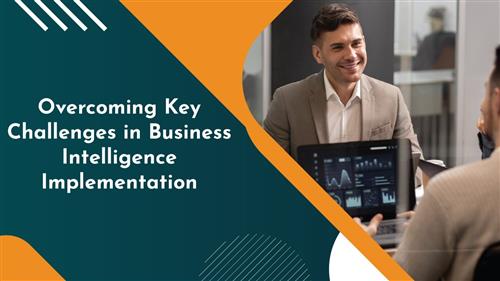

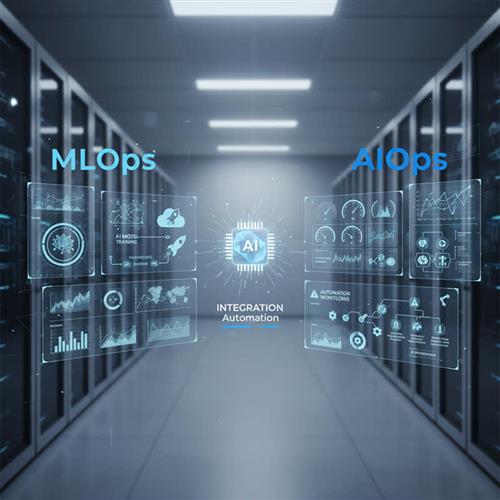
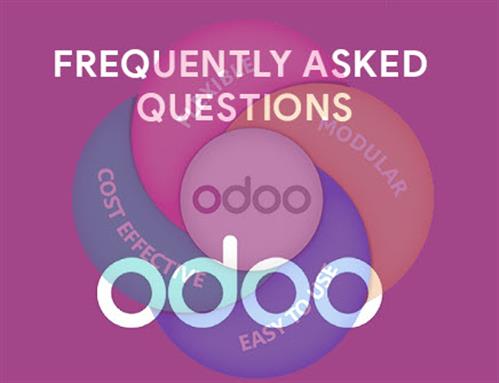
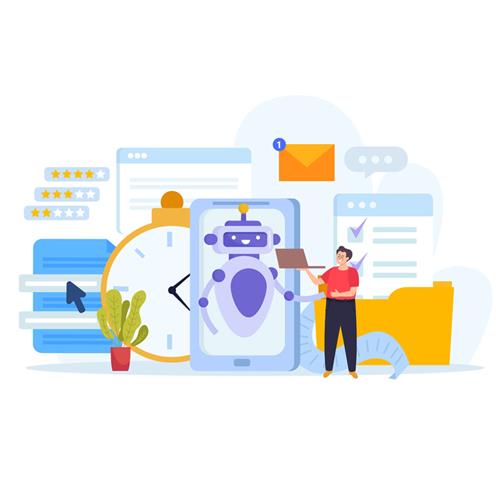

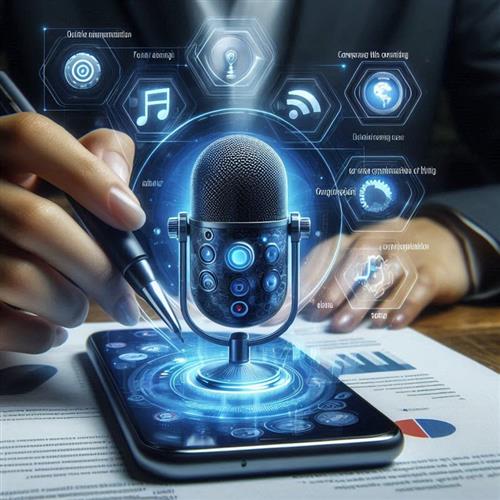




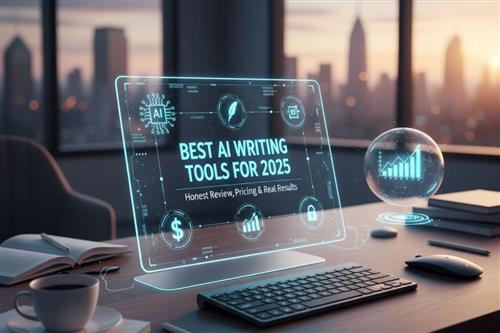


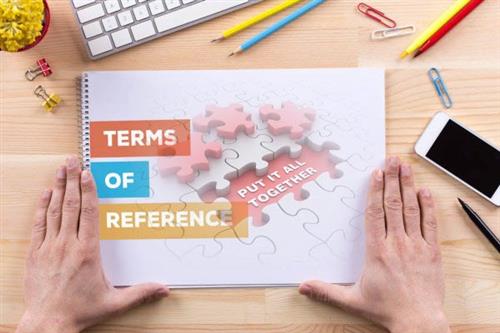


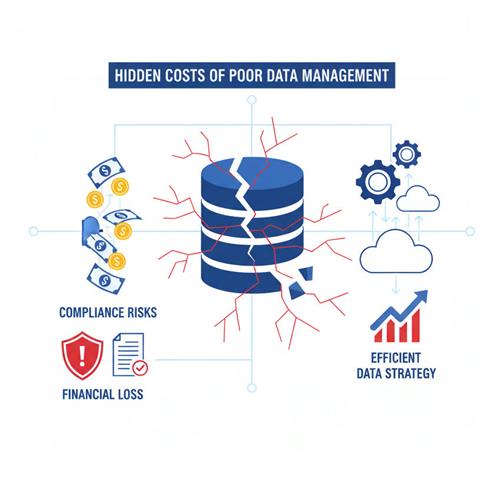

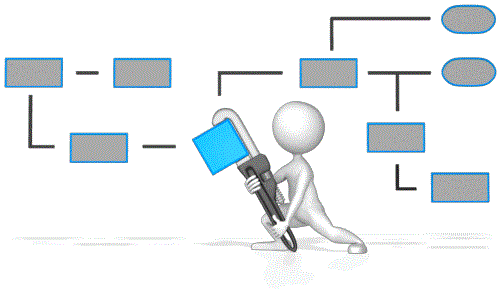









 Link copied!
Link copied!